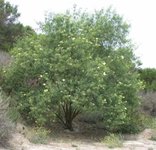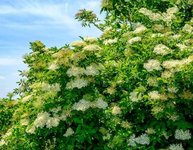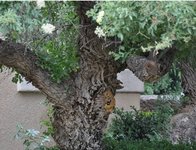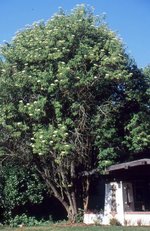Michael P
Omono
Yes, those night time lows are a lot more favorable.
This was the purpose of my thread. I might be a new kid, but I believe anyone can contribute. I'm glad somebody is getting something from this.I really enjoy your write ups on these native species. Although I live well out of their native range I would love to try some of them.






The Piñon, or Pinyon Pine, has four species (P. monophylla, P. cembroides, and P. quadrifolia), but for the sake of saving the reader from a slow death by boredom, I will focus on Pinus edulis, the Colorado Piñon.
These beautiful trees are a vital part of the environment, as they provide food and shelter for countless species. They are the first on a list of nut trees not cultivated for agriculture. The cones they produce, especially in a mast year, are rarely as large as a ping pong ball. But they are loaded with nutritious pine nuts, which are an important food source for the grey and the red squirrel, Piñon mice, Piñon Jay, wild turkey, Montezuma quail, porcupine, mule deer, wood rat, countless insects, and others. They are also highly sought after by locals who travel into the mountains collect and sell them as a delicacy.
Very slow growing, this pine is measured at a growth rate of about six feet per hundred years! Averaging about 20 to 35 feet tall and 10 to15 feet widecwith a rounded overallappearance. Their dense, dark green needles grow in pairs. The dark gray bark is scaly and irregularly furrowed. These are aromatic trees, and essential oils can be extracted from trunk and branches, needles, and immature cones.
This is on my wish list. As in, I wish I had the patience for such a slow grower. But still one of my favorites.
When speaking of habitat, pinus edulus and juniperus monosperma cannot be separated. It is impossible to understate their interconnection in nature; where one is found, so is the other. While the exact species occupying their respective rolls may shift from pinus edulus to pinus macrophylla, or juniperus monosperma to osteosperma (Utah juniper) the piñon juniper woodlands environment is a phenomenon of its own, unlike any other, and very unique to the North American geography. Nowhere else on earth is there an ecosystem characterized primarily by the interaction of two complimentary plant species.Juniperus monosperma, the One-seed Juniper, is a western species of North America. This species usually can have either multiple trunks, or very low branching, which, at a distance may appear as a clump-type shrub. Occasionally, (and my thought is this is caused by early grazing or some other loss of branching at the sapling stage), they have a single, well-developed trunk. In their natural setting, they are rather globular; typically very round, with a deep green mature foliage. The long flakes of bark on mature trees hides a cinnamon colored "new" bark underneath, making for an interesting trunk texture.
These trees produce discreet flowers starting at the end of February into mid-March, releasing pollen that may cause problems for allergy sufferers. The berries are food for birds and mammalian foragers, especially coyotes.
Collection could be a challenge, depending on location. Growing in the open, with a deep soil, the tap root of a five-year tree could reach 30 feet. With their slow aboveground growth rate, this could mean that a two foot specimen may have a root 10 times it's height. But growing on a rocky surface, the lateral roots are likely to dominate, likely allowing for somewhat easier collection.
I couldn't pin down a lifespan for this species, but I did discover that it begins producing seed at 10 to 20 years, but its most prolific seed production begins at 50 to 200 years of age. So with good care, this tree is a good option for desert bonsai for generations to come.

 crataegus.com
crataegus.com

@Gabler, thanks. I'll keep this in mind. I have my eye on a couple I'd like to collect in about a month. Would it be safe to assume similar results for an evergreen?
I guess so. Seems like we're on different extremes of climate.I have no idea. I live in a wet climate. I can't walk in a straight line in any direction for much more than a mile without wading into a river, and for weeks at a time, the soil will be completely saturated with water.
I guess so. Seems like we're on different extremes of climate.
I guess my question was more in reference to deciduous vs. evergreen. I'm still in the early stages of learning this art, so even though our climate is different, your experience still has merit. Some aspects of bonsai transcend environment.
